This article is going to be a bit different than what I normally write for Art Uncovered but topic wise it couldn’t be more fitting.
I was invited to the exhibition ‘Sisterhood’ at Gallery Michael Bella here in Vienna, curated by Sophie Haslinger, for IntAkt (= international action group of women fine artists). The group exhibition focuses on connection and connecting elements between women. To join forces with other women, to strengthen and help each other, and to learn from each other. Shown are artworks from women about other women, to reverse the point of view from which stories, lives, and experiences of women have been told so far (often also from a man’s perspective) and let them tell their stories themselves.
The exhibition starts in a room downstairs, which is fitting to the overall theme of the works shown here, which is the collective, the power collectives can have, the power of working together, and the strong foundation that is needed, otherwise the whole “house” collapses. The first work you encounter when coming into the room is an installation by Doris Schamp, consisting of 203 wooden blocks in three different colours and a drawing by Doris on them, capturing the spirit of collectives very visually. Also from her, are the three acrylic on wood paintings (with epoxy resin finishing) on the left side beside the installation, showing a ‘business woman’ in three different variants.
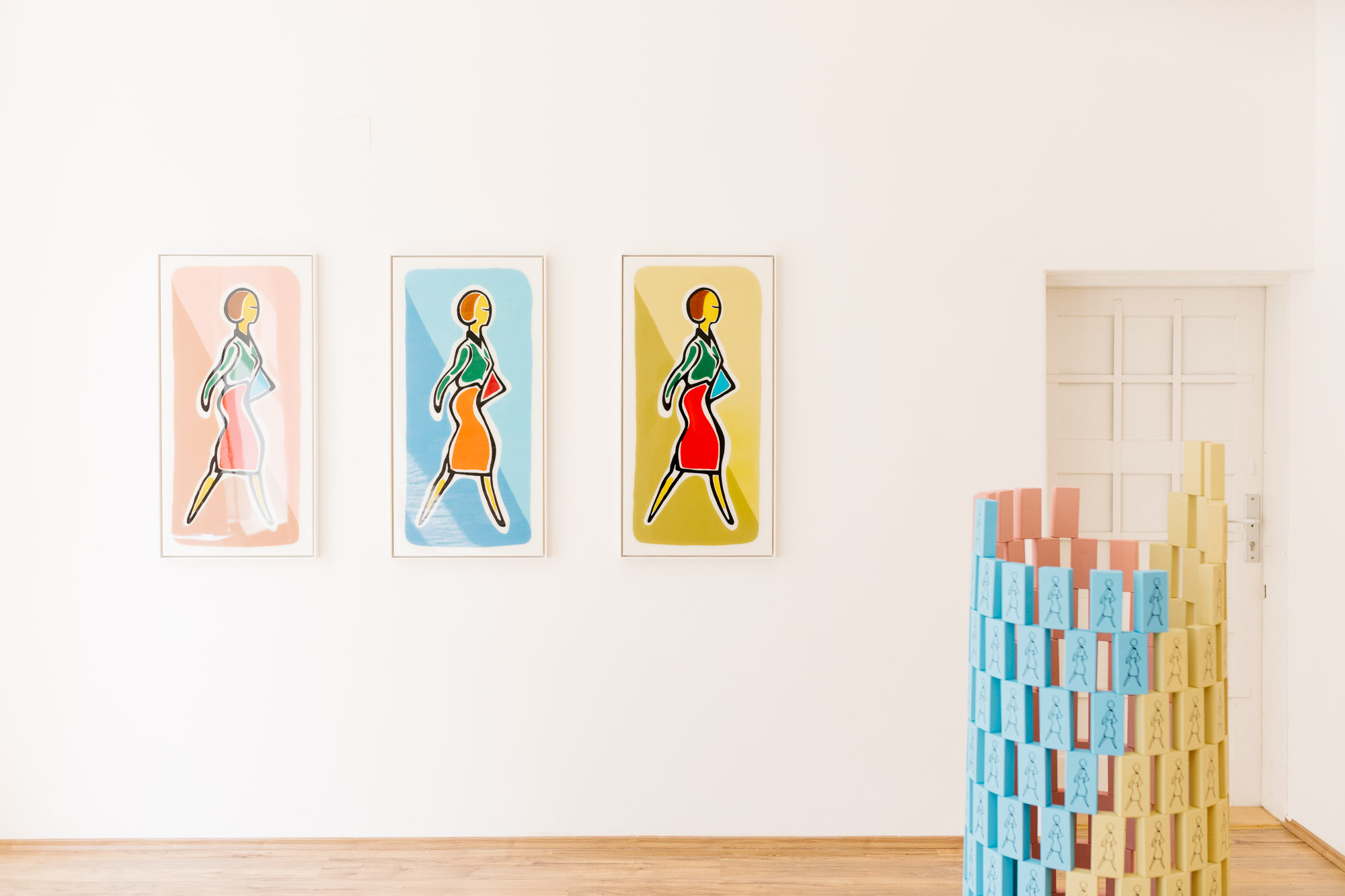
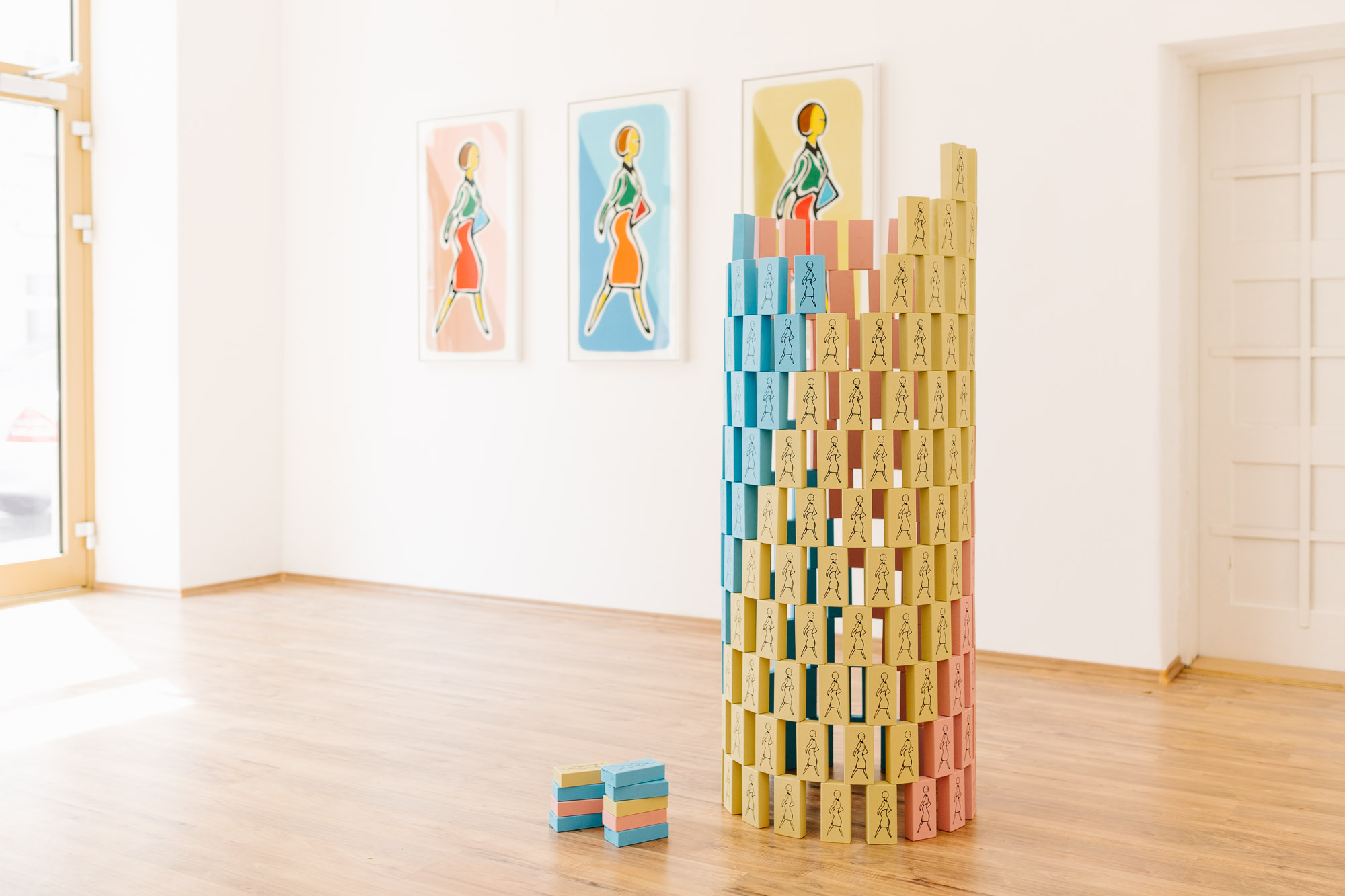
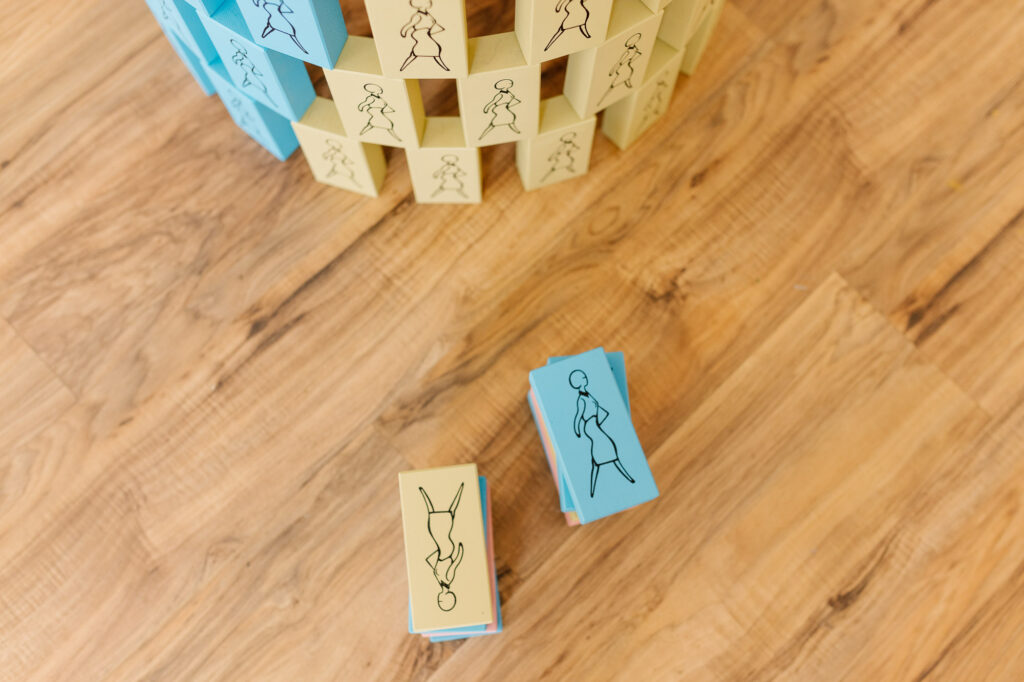
Paintings ‘Business Woman’ and Installation ‘Frau am Bau’ (‘Woman at the construction site’) by Doris Schamp
What also catches your eye when you enter the room is the painting by Stella Bach. It thematizes the solidary coalition between women around the world and stands up against patriarchal power structures.
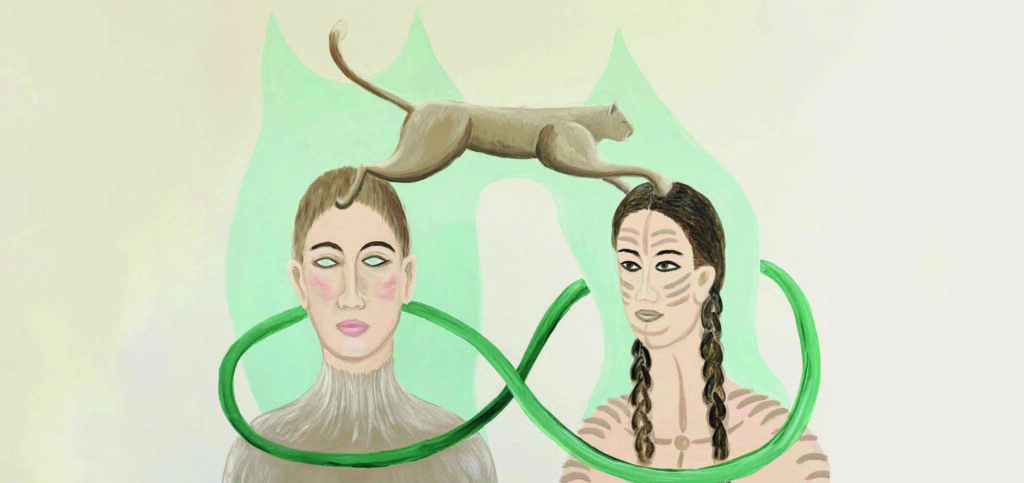
‘My Native Sister’ by Stella Bach
The theme of the collective is extending into the first room of the second part of the exhibition space. On the one hand with two works also by Stella Bach, on the other hand with a collage by Leonie Lehner. Leonie shows in her collage her idea of a collective Utopia, which also involves animals and all kinds of living beings.
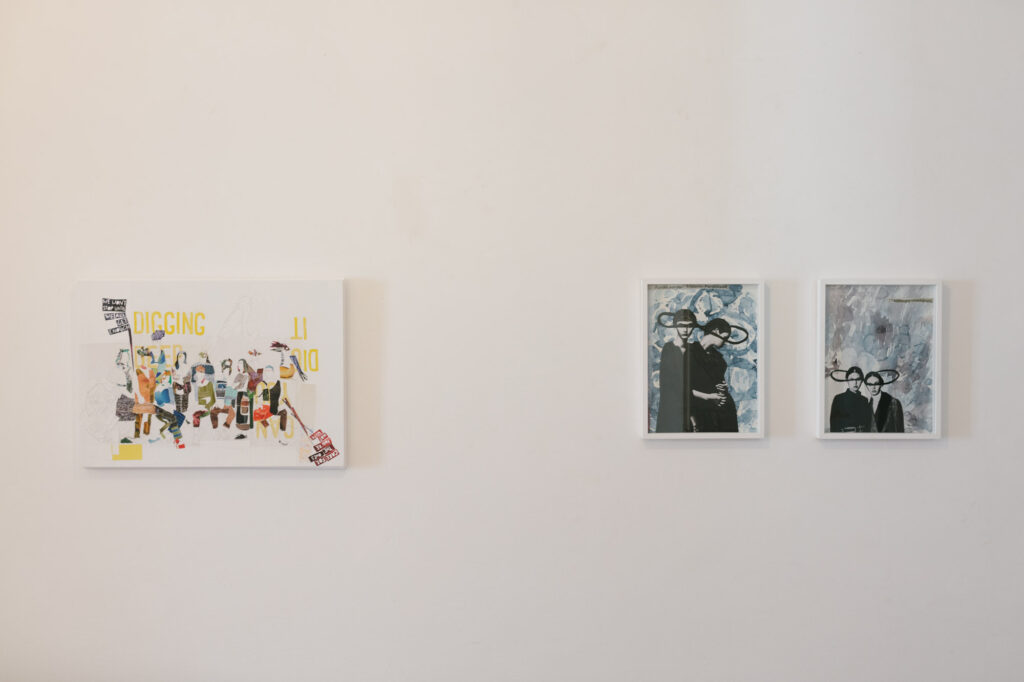
On the right side
Left one: ‘Furcht vor der finsteren Parallelwelt’
(‘Fear of the dark parallel world’)
Right one: ‘Abhängig unabhängig’ (‘Dependent independent’)
by Stella Bach
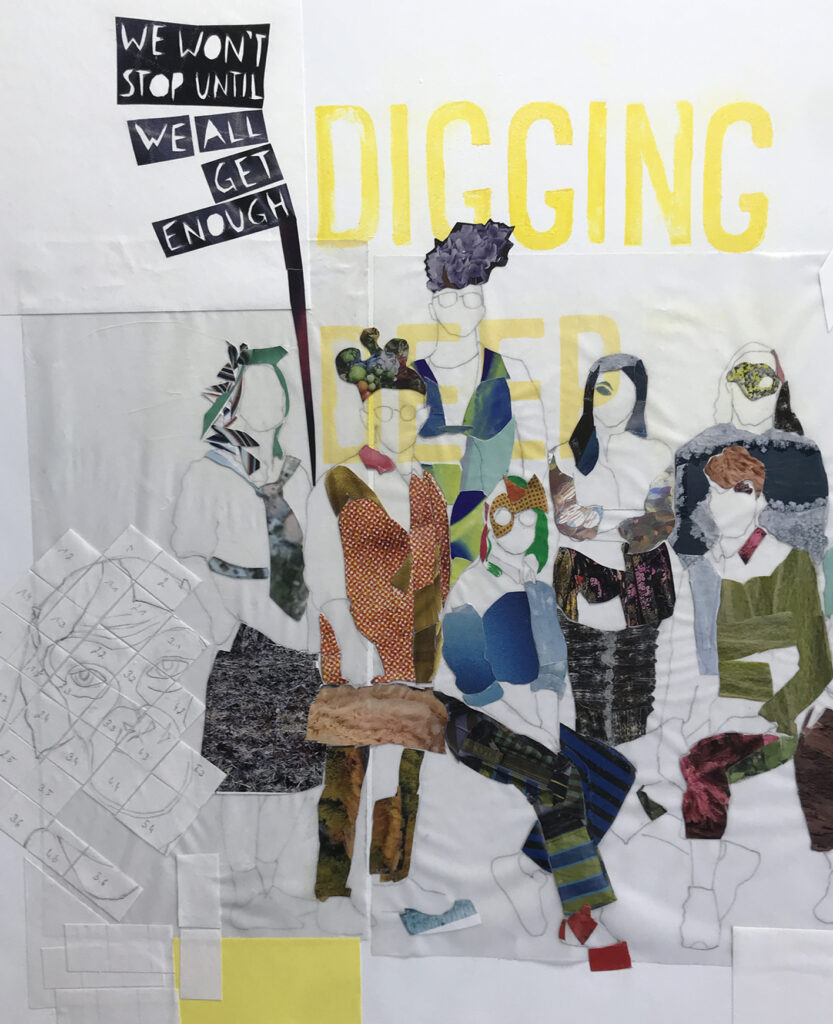
‘Of our kin’ by Leonie Lehner
The artworks in the next room deal with the subject matter of gestures and poses. Very visually expressing this topic are the analog photographic works by Asta Cink. In these Asta photographed herself, all dressed in black, in front of a black background, with only her hands and her face standing out, to lay emphasis on her gestures and body language. Of reaching out to others, connecting, the vulnerability that may come with that, opening up to others, and self-empowerment.
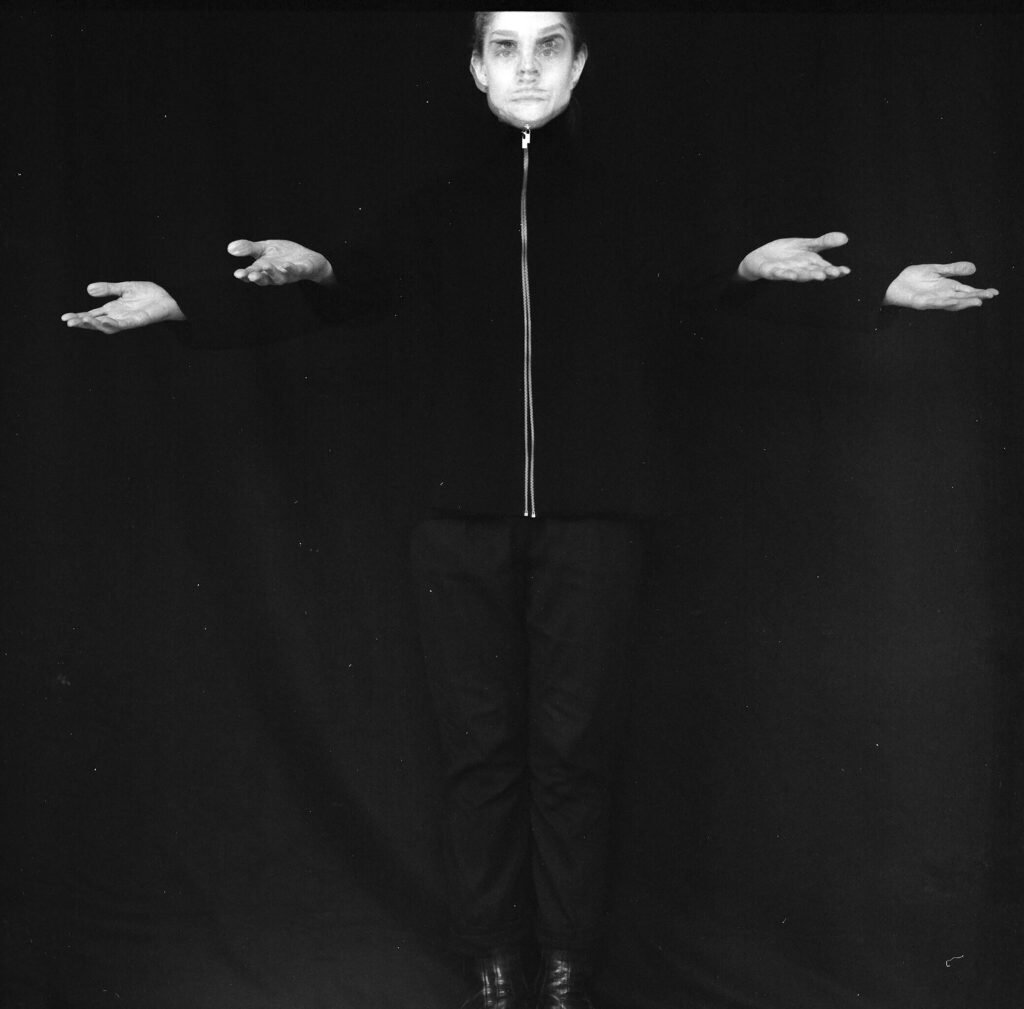
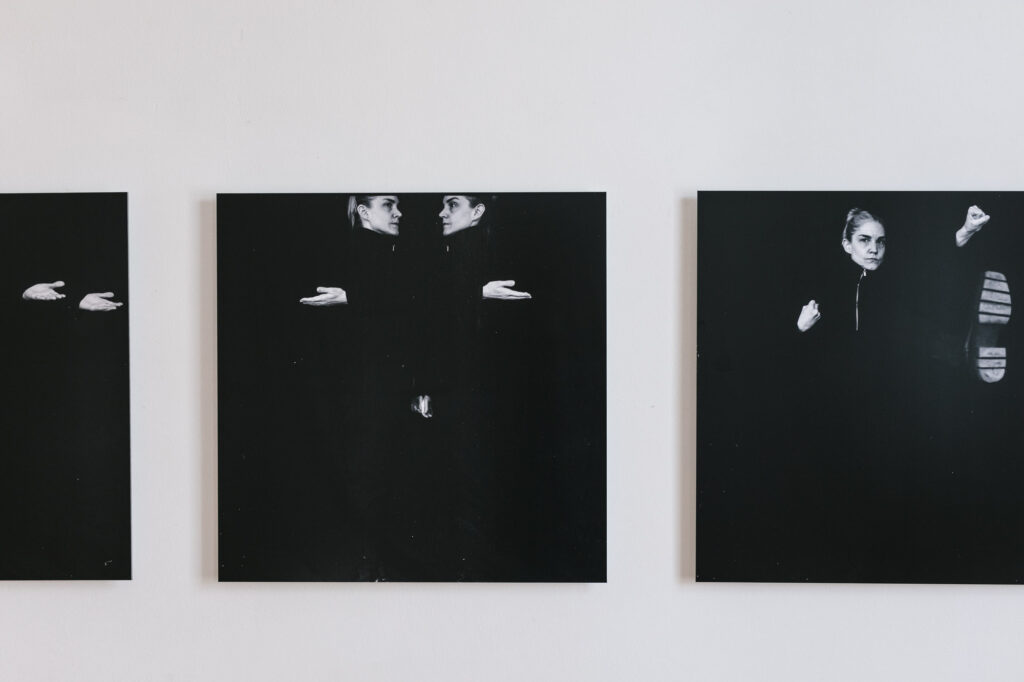
‘Reich mir die Hand (Von der Pose und Geste)’ (‘Give me your hand (From pose and gesture)’) by Asta Cink
Going into this matter is also the artwork by Fria Elfen, a collage with foil on plexiglass.
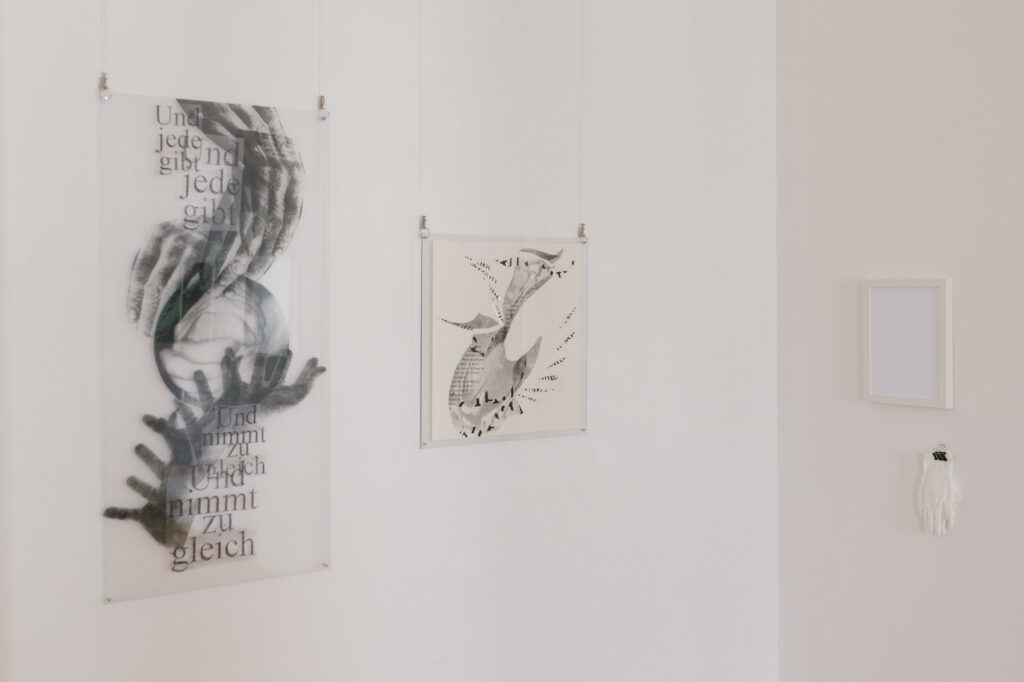
On the far left side: ‘Sisterhood’ by Fria Elfen
On the opposite side are the artworks by Dorothée Zombronner and Julia Bugram, who are in this discussing traditional and societal roles and expectations of women, a collective anger about this and are holding against it with their artworks.
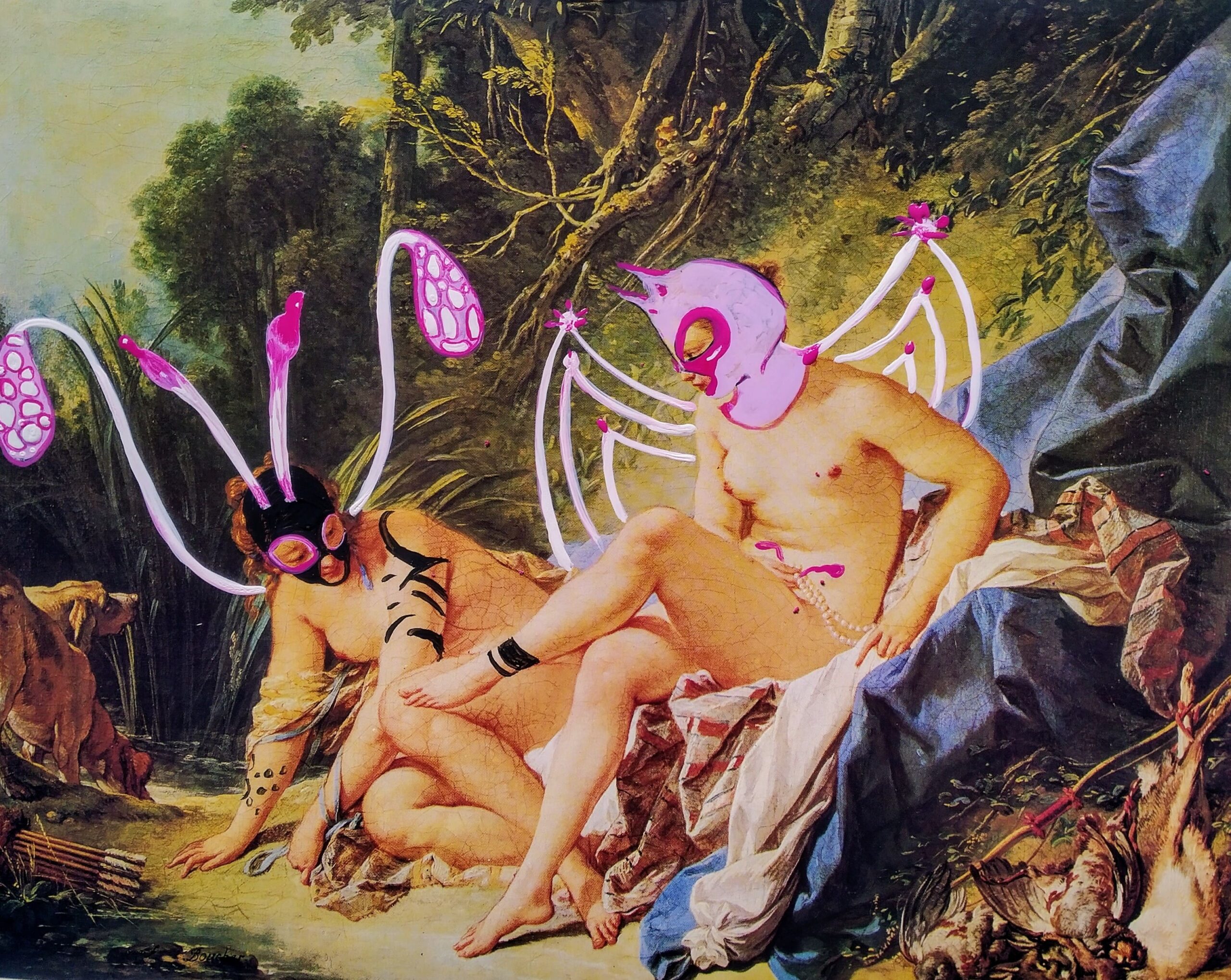
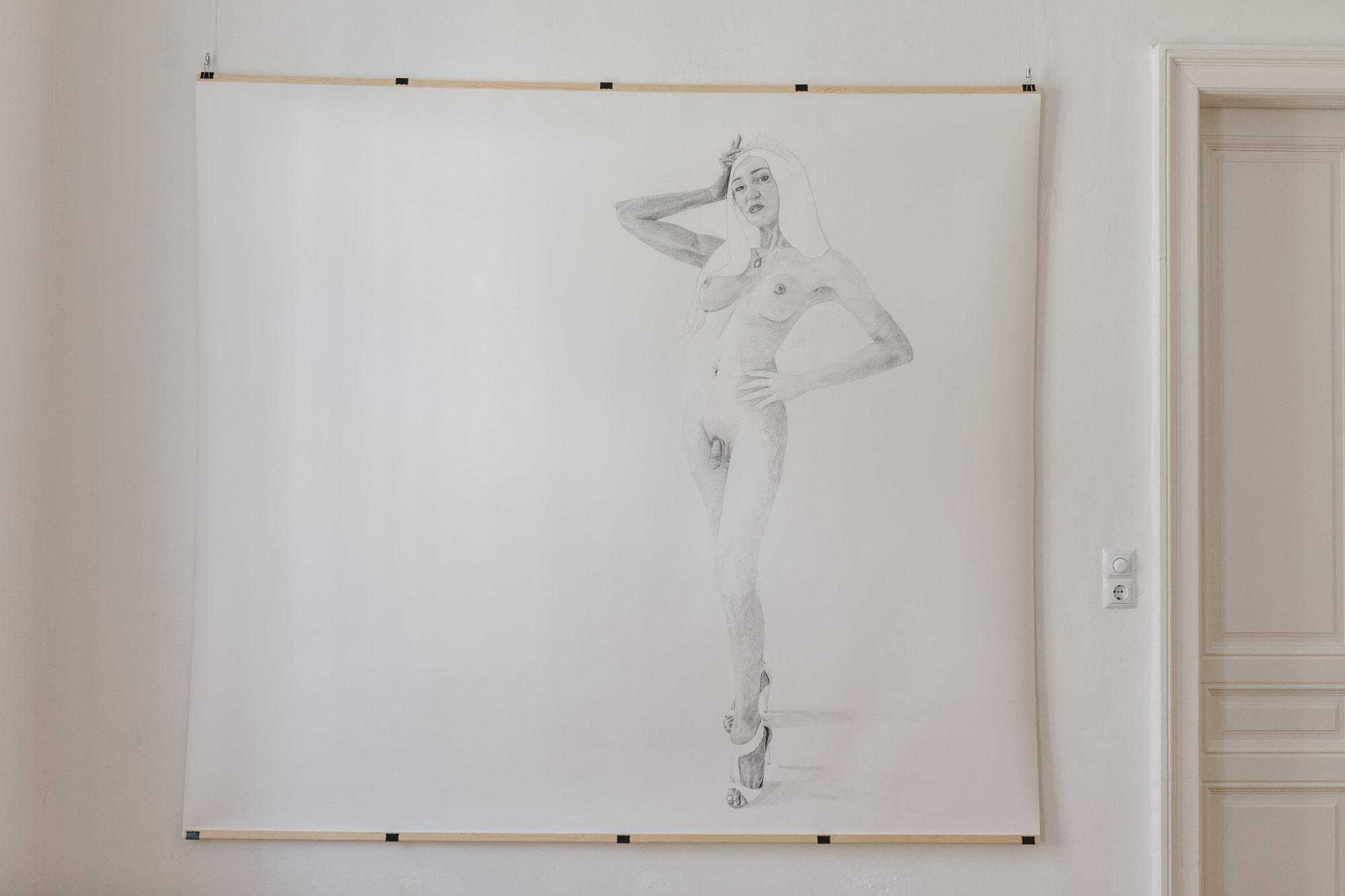
‘With or without you’ by Dorothée Zombronner ‘Nuda Veritas’ by Julia Bugram
The artwork of Sarah Mang is already giving a taste of what the room to the left from this one, is thematically about. Sarah’s tactile drawing (art print) shows a portrait of the artist Sofonisba Anguissola, who, and whose work, was forgotten and overseen for a long time. The portrait itself is consisting of small knobs, where visitors are invited to, through the gloves hanging beside it, tactually explore it. Beside the artwork hangs also a QR-Code where visitors are invited to add their own ‘sister’ (whoever that may be for you, a family member, a role model, etc.).
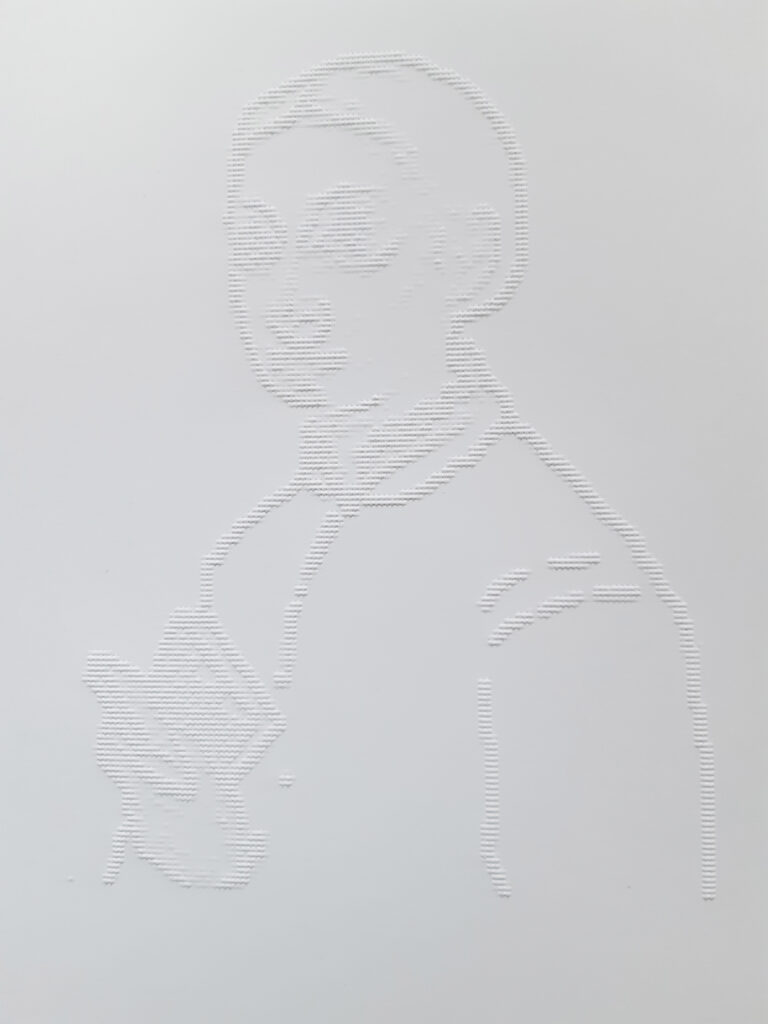
‘Sofonisba Anguissola’ by Sarah Mang
Extending into the room on the left is the theme of women role models and heroines. Extending also the matter of long-forgotten/overseen/underappreciated women artists are the artworks by Elisabeth Hansa and Ingrid Gaier. Elisabeth Hansa shows painted portraits of the artist Carmen Herrera and Ingrid Gaier is engaging herself through her works (drawings, watercolour paintings, and animations) with the artist Melitta Urbancic and her works.
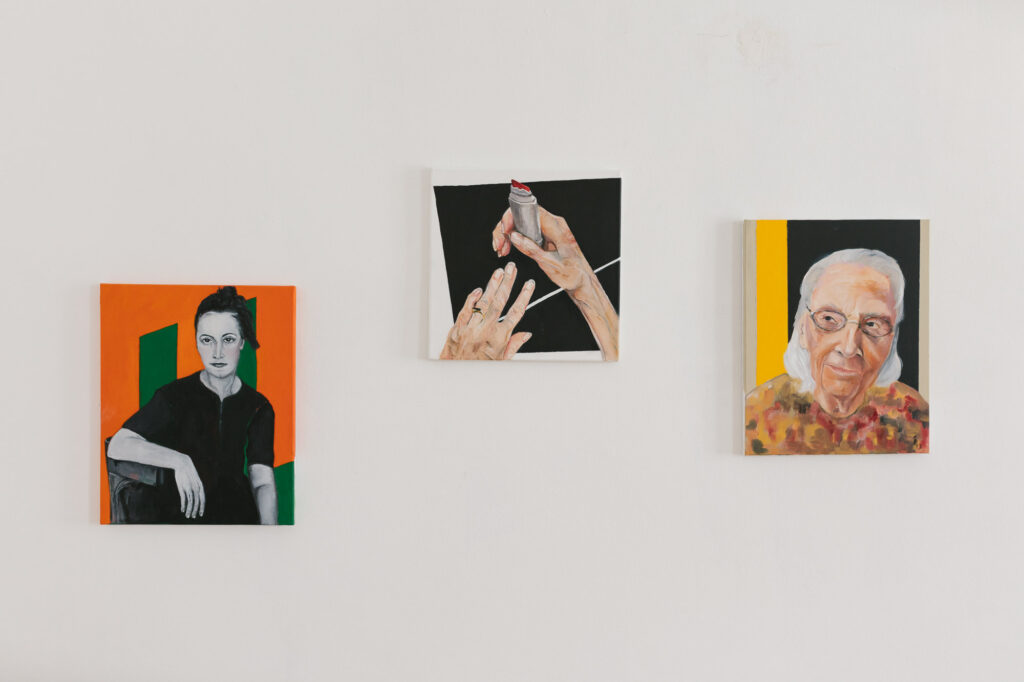
Left: ‘Carmen Herrera 1948’, Middle: ‘Carmen Herrera 2015’, Right: ‘Carmen Herrera 2015’ by Elisabeth Hansa
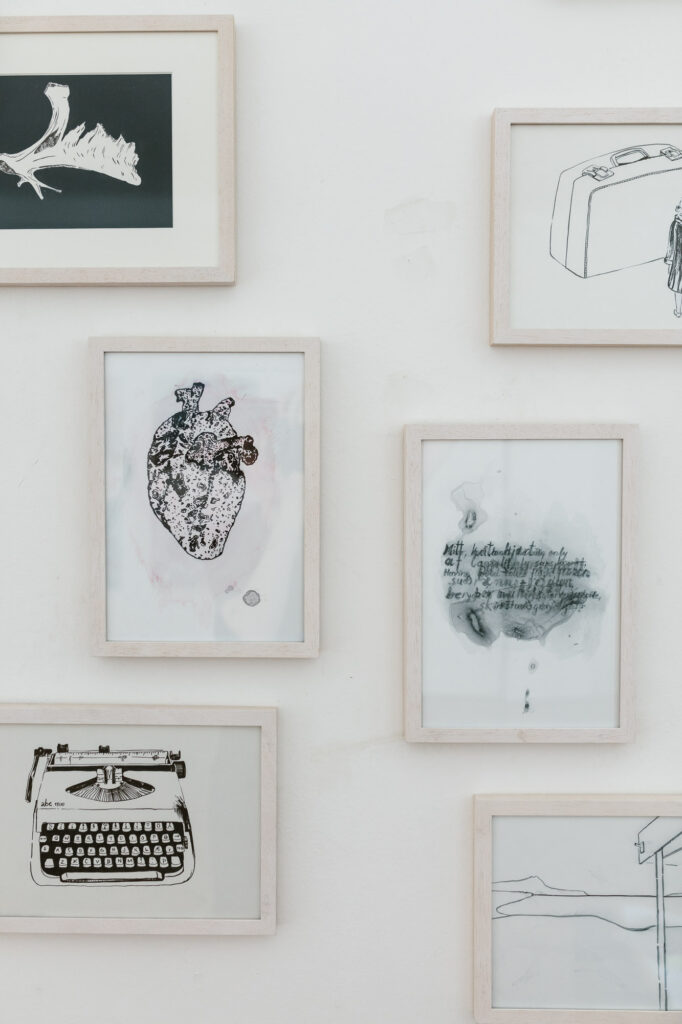
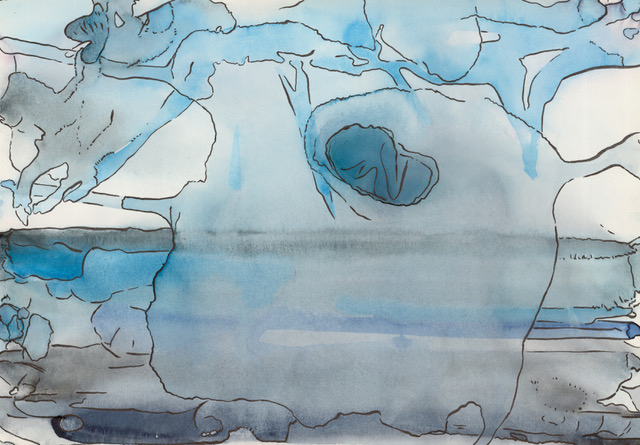
‘Lebenszeichen’ (‘signs of life’) by Ingrid Gaier
The artist Dora Mai on the other hand finds her role model in her own family, her grandmother. The origin of the four paintings was a photograph showing her grandmother with friends. Dora modified this, besides in one keeping the original constellation, into showing herself with her grandmother, then in another with Dora’s daughter, and then again her grandmother alone. This play with different constellations also shows the connection always present with the women (and people in general) before us, even if we didn’t know them anymore (like here in the case of Dora’s daughter and grandmother).
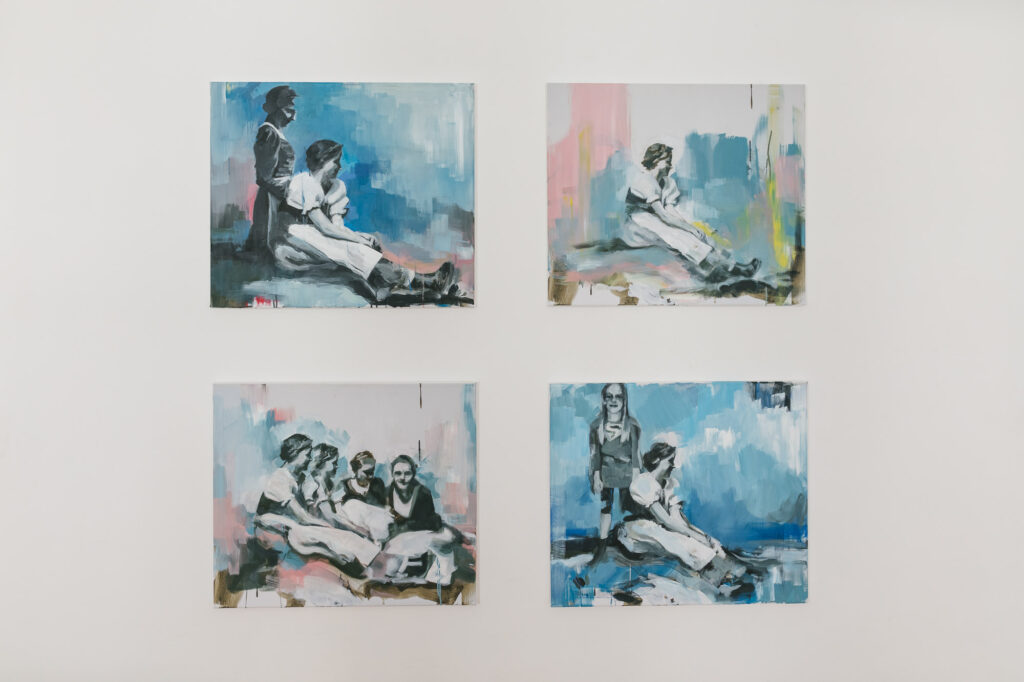
‘Moments//Variationen’ (‘Moments//Variations’) by Dora Mai
The fourth and last room to the right combines artworks that resulted from different collaborations between artists who are part of IntAkt.
The artwork which is striking you first is the video work by Ilse Chlan, opposite the entrance. In her documentary work artist Fria Elfen (who is a member of IntAkt since the beginning) talks about her own experiences and struggles as a female artist in general but also working in that field and having children.
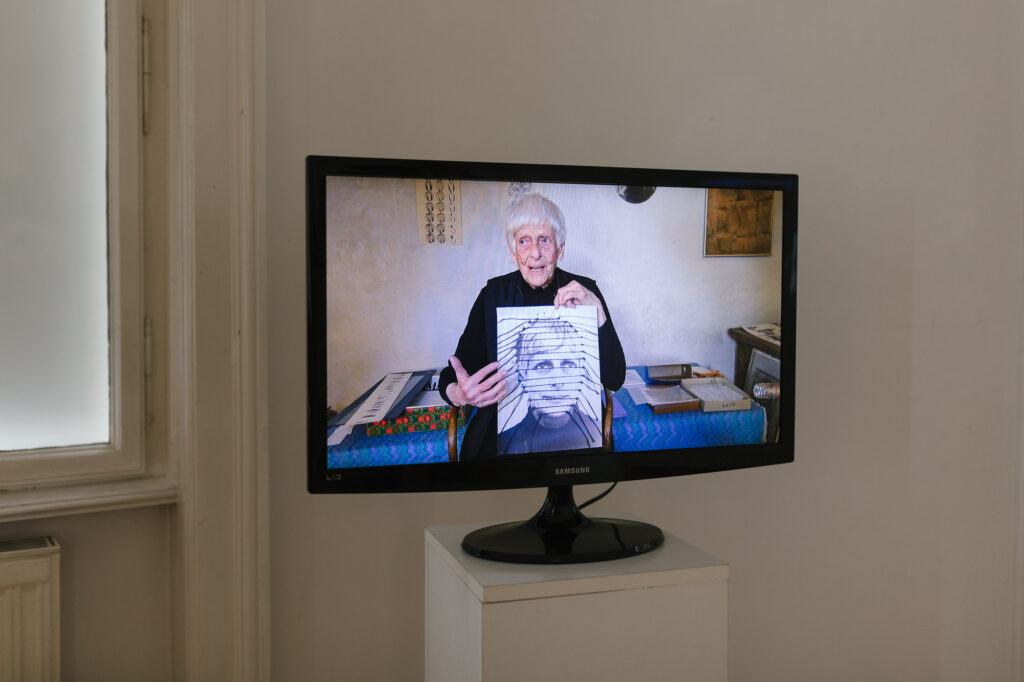
Video still of ‘Sich im Spiegel immer wieder neu erfinden’ (‘Inventing yourself always new in the mirror’) by Ilse Chlan
Connected to being a mother in the art world is the work of Agnes Rossa. In her video work, she gave other artists, who are also mothers, a chance to talk about their experiences.
Linde Waber brings something else into focus which is also often overseen; the creative and working spaces of women artists. For her atelier drawings, she visits other artists in their studios.
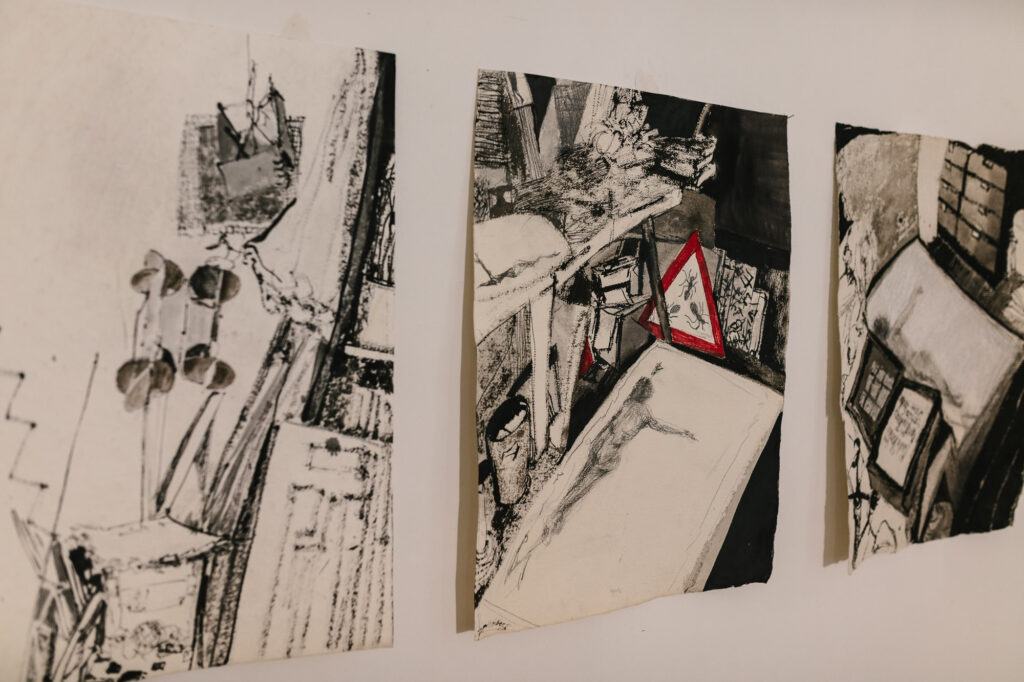
‘Atelierzeichnungen’ (‘studio drawings’) by Linde Waber
Closing the thematic circle and bringing it back to the start is the artwork by Gerti Hopf, who in it thematizes working together (collectively) as women and breaking down patriarchal structures.
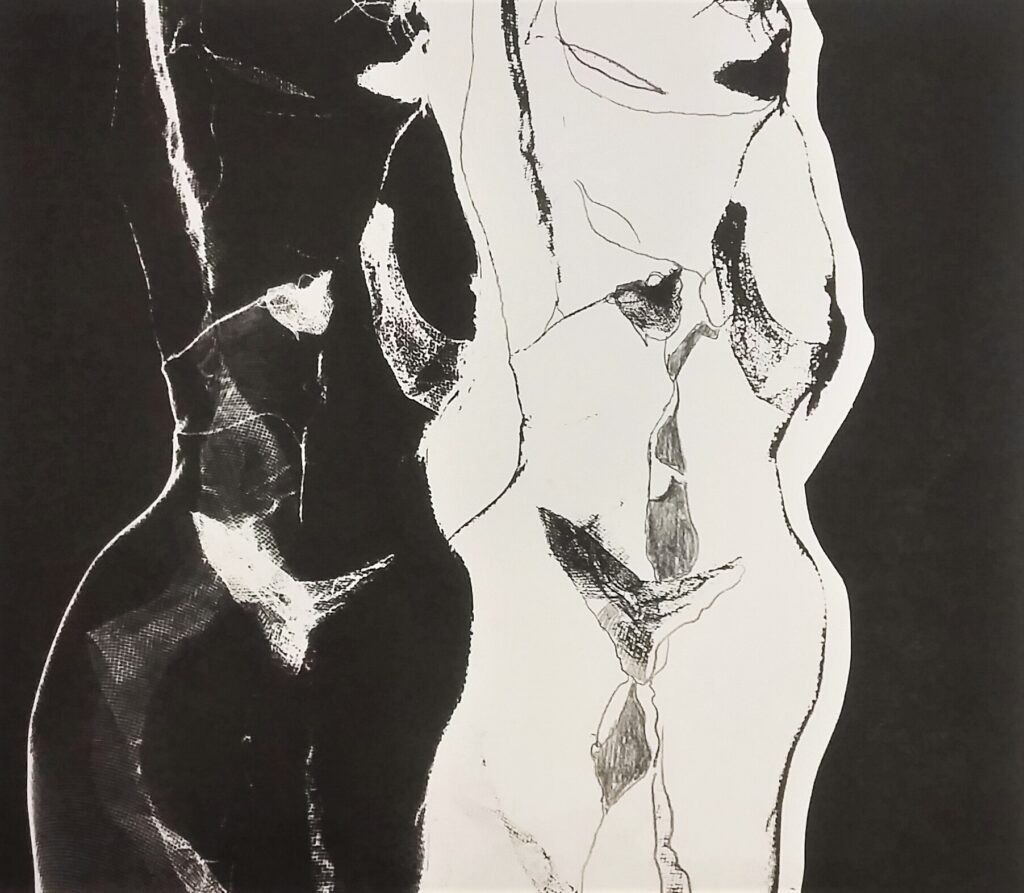
‘Sisterhood’ by Gerti Hopf
The exhibition ‘Sisterhood’ shows the power that women working together collectively and connection holds. At the same time, it also shows the vulnerable insight and raw emotions which come with being a woman and a female artist in this world. It gives a space for women/women artists to express their experiences and to open up new focus points.
The exhibition is still on until the 8th of July 2022.
About IntAkt:
IntAkt is a feminist-inspired network for women artists. It was founded in 1977, to improve the social and artistic situation for women fine artists. National and international women artists take part actively in what’s happening both culturally and politically due to IntAkt. With numerous exhibitions and projects, the network is showing active engagement in dealing with present problems.
Photo Credits:
‘My Native Sister’: © Stella Bach
‘Of our kin’: © Leonie Lehner
Left picture of ‘Reich mir die Hand (Von der Pose und Geste)’ (‘Give me your hand (From pose and gesture’): © Asta Cink
‘With or without you’: © Dorothée Zombronner
‘Sofonisba Anguissola’: © Sarah Mang
Right picture of ‘Lebenszeichen’ (‘signs of life’): © Ingrid Gaier
‘Sisterhood’: © Gerti Hopf
All other pictures: © Theresa Wey
Website: https://www.intakt-kuenstlerinnen.com
Instagram: https://www.instagram.com/intakt-kuenstlerinnen/
https://www.instagram.com/stellabach/
https://www.instagram.com/_.jubu._/
https://www.instagram.com/asta_cink/
https://www.instagram.com/elisabethhansa/
https://www.instagram.com/dor.a.mai/
https://www.instagram.com/_sarahmang/









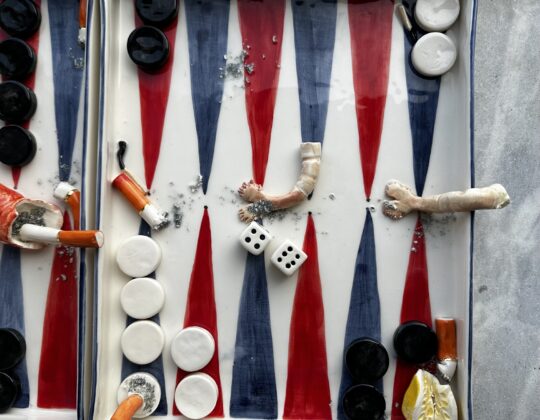
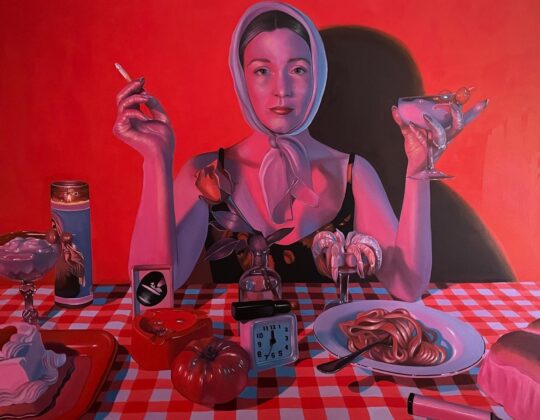


Thank you for this excellent article!!